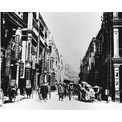
- Shops on Queen's Road Central
Those Chinese people who came to Hong Kong to earn a living in the early days lead extremely difficult lives. In times of trouble, they reached out to industry, native and kai-fong (neighbourhood) associations for assistance. Over time, Chinese communities developed a strong spirit of mutual support. This photograph shows Queen's Road Central to the west of Central Market in the early 20th century. Burgeoning with shops on both sides of the road, this is indeed a prosperous scene.
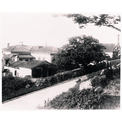
- Berlin Foundling House
The Berlin Foundling House in Hong Kong Island West; circa 1900. The orphanage, initially located in rented premises on Morrison Hill, was founded in the 1850s by the Berlin Ladies Mission for China to care for orphan girls. In 1860, it was relocated to the new premises in Sai Ying Pun depicted in this photograph. In 1903 it was renamed the Bethesda Home.
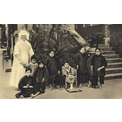
- Nun and Chinese children
A nun and seven Chinese children in the Asile de la Sainte Enfance in Wan Chai, early 20th century.
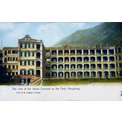
- Italian Convent
The Italian Convent (an orphanage, later became the Canossian Sacred Heart College) located between Caine Road and Robinson Road; circa 1890s.
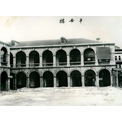
- Ping On Building
The directors of the Tung Wah Hospital generously supported the founding of the Po Leung Kuk association (originally named Po Leung Kung Kuk). The upper floors of Ping On and Fook Sau buildings were loaned to Po Leung Kuk to provide shelter for women and children and for use as office space. This photograph shows the newly completed Ping On Building.
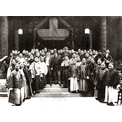
- Inauguration of premises of Po Leung Kuk
Group photo of Sir Kai Ho Kai (Centre), Colonial Secretary Stewart Lockhart and other officials and guests taken during the inauguration of the premises of Po Leung Kuk in 1896.
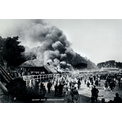
- Fire at Happy Valley Race Course
On 26 February 1918, a fire tore through the Happy Valley Race Course. Upon word of the fire, the Tung Wah Hospital sent medical personnel to tend to the many victims of the blaze.
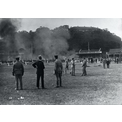
- Military personnel access damage to racecourse after the fire
After the fire at the Happy Valley Race Course, Tung Wah honoured the requests of the families of the deceased by establishing the Race Course Fire Victims' Cemetery in So Kon Po. A jiao ceremony was also organised so that victims' spirits could be redeemed. Taken in 1918, this photograph shows military personnel accessing damage to the racecourse after the fire.
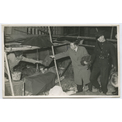
- Distributing winter clothes to victims of squatter fire in Hung Hom
The Tung Wah directors of 1960/1961 hire a vehicle to transport winter clothes to victims of the fire in the Valley Road squatter area in Hung Hom.
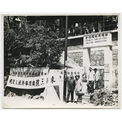
- Delivering food and relief supplies to typhoon victims in Kennedy Town
People affected by a typhoon find temporary refuge in the clinic of the Kennedy Town Kai-Fong Welfare Association. The TWGHs directors of 1961/1962 delivered food and relief supplies to those affected. (TWGHs, Tung Wah Group of Hospitals)
